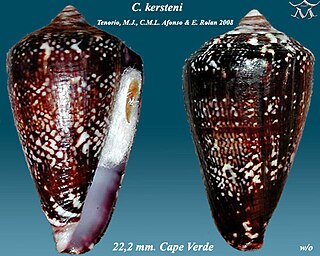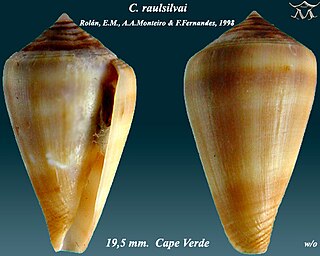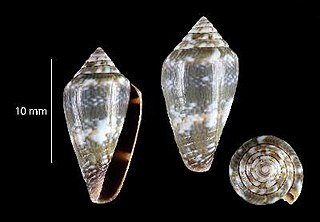Related Research Articles
The Cape Verde shearwater, or cagarra locally, is a medium-large shearwater, a seabird in the petrel family Procellariidae. It is endemic to the Cape Verde archipelago of Macaronesia in the Atlantic Ocean, off the coast of West Africa.

Santo Antão is the westernmost island of Cape Verde. At 785 km2 (303 sq mi), it is the largest of the Barlavento Islands group, and the second largest island of Cape Verde. The nearest island is São Vicente to the southeast, separated by the sea channel Canal de São Vicente. Its population was 38,200 in mid 2019, making it the fourth most populous island of Cape Verde after Santiago, São Vicente and Sal. Its largest city is Porto Novo on the south coast.

Santa Luzia is an island of the Barlavento archipelago in Cape Verde located between São Nicolau and São Vicente, the channel of Santa Luzia separates the island of São Vicente and is 8 km wide. The area is 34.2 km². Like all Cape Verdean islands, it is of volcanic origin. The highest point is Topona. Santa Luzia is 12.4 km long and 5.3 km wide.

The wildlife of Cape Verde is spread over its archipelago of ten islands and three islets, which all have parks under their jurisdiction by decree promulgated by the Cape Verde government. Located off the west coast of Africa, the total land area of the island nation is 4,564 square kilometres (1,762 sq mi). The wildlife consists of many tropical dry forest and shrub land, endemic flora and fauna, and rare breeding seabirds and plants, which are unique to this group of islands.
Bandeirenica caboverda, locally known in Cape Verde as "mil-pés", is a species of millipedes of the family Odontopygidae. It is endemic to Cape Verde, where it occurs in the islands of Santo Antão and São Vicente. First described in 1987 as Spinotarsus caboverdus, it was placed in the genus Bandeirenica in 2000.

Cape Verde or Cabo Verde, officially the Republic of Cabo Verde, is an archipelago and island country in the central Atlantic Ocean, consisting of ten volcanic islands with a combined land area of about 4,033 square kilometres (1,557 sq mi). These islands lie between 600 to 850 kilometres west of Cap-Vert situated at the westernmost point of continental Africa. The Cape Verde islands form part of the Macaronesia ecoregion, along with the Azores, the Canary Islands, Madeira, and the Savage Isles.

The Facelinidae are a taxonomic family of colorful sea slugs. These are specifically aeolid nudibranchs. They are marine gastropod molluscs.

Conus crotchii is a species of sea snail, a marine gastropod mollusk in the family Conidae, the cone snails and their allies.

Conus cuneolus is a species of sea snail, a marine gastropod mollusk in the family Conidae, the cone snails and their allies.

Conus damottai, common name the Glabrous cone, is a species of sea snail, a marine gastropod mollusk in the family Conidae, the cone snails and their allies.

Conus diminutus is a species of sea snail, a marine gastropod mollusk in the family Conidae, the cone snails and their allies.

Conus fernandesi is a species of sea snail, a marine gastropod mollusk in the family Conidae. It is endemic to the Cape Verde islands.

Conus isabelarum is a species of sea snail, a marine gastropod mollusk in the family Conidae, the cone snails and their allies.

Conus kersteni is a species of sea snail, a marine gastropod mollusk in the family Conidae, the cone snails and their allies.

Conus raulsilvai is a species of sea snail, a marine gastropod mollusk in the family Conidae, the cone snails and their allies.

Conus vulcanus is a species of sea snail, a marine gastropod mollusk in the family Conidae, the cone snails and their allies.

Conus denizi is a species of sea snail, a marine gastropod mollusk in the family Conidae, the cone snails, cone shells or cones.

Conus longilineus is a species of sea snail, a marine gastropod mollusk in the family Conidae, the cone snails and their allies.

Conus santanaensis is a species of sea snail, a marine gastropod mollusc in the family Conidae, the cone snails, cone shells or cones.
Pruvotfolia rochebruni is a species of sea slug, an aeolid nudibranch, a marine gastropod mollusc in the family Facelinidae.
References
- 1 2 Eliot C.N.E. (1906). Report upon a collection of Nudibranchiata from the Cape Verde islands, with notes by C. Crossland. Proceedings of the Malacological Society of London l7(3): 131-159.
- ↑ Gofas, S. (2015). Pruvotfolia longicirrha. In: MolluscaBase (2015). Accessed through: World Register of Marine Species on 2015-12-15